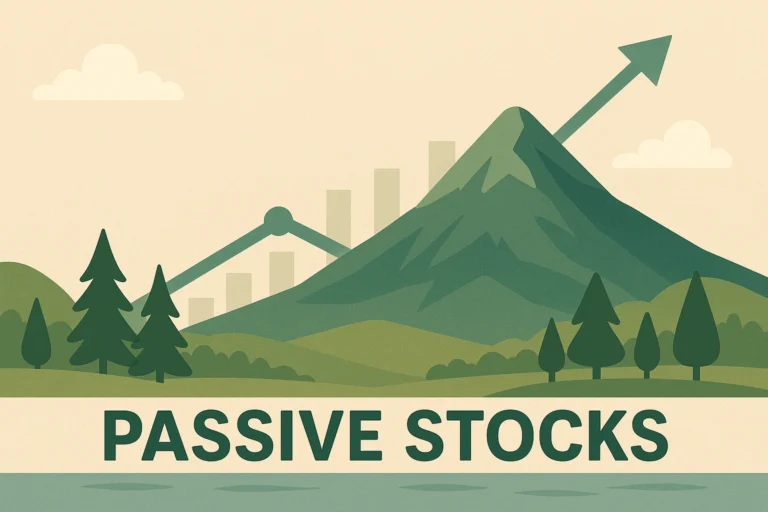Top 10 Value Stocks to Consider in 2025 – 5starsstocks.com

Finding value stocks is like bargain hunting, you’re looking for quality companies priced below what they’re truly worth. Here’s a curated list of 10 top value stocks in 2025 based on strong fundamentals, attractive valuations, and long-term potential.
What Is a Value Stock?
A value stock is a company’s share that trades at a lower price relative to its fundamentals — such as earnings, dividends, or book value — compared to other companies in the same industry. These stocks are typically undervalued by the market for various reasons like temporary challenges, lack of investor attention, or broader economic cycles.
In simpler words: value stocks are like great products on sale. You’re buying a company at a discount, hoping the market will recognize its true worth over time.
Characteristics of Value Stocks
Value stocks often share common traits that make them appealing to long-term investors:
1. Low Price-to-Earnings (P/E) Ratio
This suggests that the stock is cheap relative to the company’s earnings. A low P/E can mean the company is undervalued compared to its peers.
2. High Dividend Yields
Value stocks often belong to mature companies that reward shareholders with regular dividends — ideal for income-focused investors.
3. Low Price-to-Book (P/B) Ratio
This means the stock is trading below the company’s book value, indicating a possible undervaluation.
4. Stable Business Model
Value companies typically have predictable cash flows, solid operations, and a proven track record.
5. Out of Favor
These stocks may be unpopular due to recent bad news or lack of hype — but that’s what often creates the opportunity for investors.
Value Stocks to Consider in 2025
1. Johnson & Johnson (JNJ)
Sector: Healthcare
Why It’s a Value Stock:
Johnson & Johnson is a global healthcare leader known for its pharmaceutical, medical device, and consumer health products. Despite ongoing legal battles and restructuring, JNJ maintains solid cash flows and a strong dividend history.
- P/E Ratio: Lower than the industry average
- Dividend Yield: Around 3%
- What Makes It Valuable: Stability, diversified income, and resilience in downturns
2. Pfizer Inc. (PFE)
Sector: Pharmaceuticals
Why It’s a Value Stock:
After its COVID-19 boom, Pfizer’s stock has corrected significantly, pushing it into value territory. With a robust drug pipeline and a global presence, Pfizer offers strong long-term potential at a discount.
- P/E Ratio: Low due to post-pandemic decline in vaccine revenue
- Dividend Yield: Over 4%
- What Makes It Valuable: R&D strength and steady pharmaceutical sales
3. Intel Corporation (INTC)
Sector: Technology – Semiconductors
Why It’s a Value Stock:
Intel has underperformed peers like AMD and Nvidia due to delays in chip innovation. However, it still has massive manufacturing infrastructure and plans for a major turnaround.
- P/E Ratio: Very low compared to tech sector
- Dividend Yield: Around 1.5%
- What Makes It Valuable: Solid assets, government support, and rebound potential
4. 3M Company (MMM)
Sector: Industrials
Why It’s a Value Stock:
3M has faced lawsuits and declining revenue, pushing the stock price down. Yet, it remains a giant with a strong dividend record and global reach in multiple industries.
- P/E Ratio: Low due to risk factors
- Dividend Yield: Over 5%
- What Makes It Valuable: Strong balance sheet and potential for legal resolution
5. Bank of America (BAC)
Sector: Financials – Banking
Why It’s a Value Stock:
Bank of America is one of the largest U.S. banks with stable earnings and a growing digital banking segment. Rising interest rates have benefitted its core business.
- P/E Ratio: Below industry average
- Dividend Yield: Around 2.8%
- What Makes It Valuable: Efficiency, scale, and interest-rate advantage
6. Verizon Communications Inc. (VZ)
Sector: Telecommunications
Why It’s a Value Stock:
Verizon is undervalued due to slow growth and high debt. However, it continues to generate steady cash flows and offers a high dividend yield, making it attractive for income investors.
- P/E Ratio: Low
- Dividend Yield: Over 6%
- What Makes It Valuable: Consistent cash flow and strong customer base
7. AT&T Inc. (T)
Sector: Telecommunications
Why It’s a Value Stock:
Despite past struggles with mergers and media deals, AT&T has refocused on its core telecom business. It’s cleaning up its balance sheet and improving operations.
- P/E Ratio: Low
- Dividend Yield: 6.4%
- What Makes It Valuable: High yield, stable subscriber growth, and focus on telecom
8. Chevron Corporation (CVX)
Sector: Energy – Oil & Gas
Why It’s a Value Stock:
Chevron benefits from high energy prices and smart capital discipline. It’s using its cash flow to buy back shares and increase dividends, while maintaining a strong balance sheet.
- P/E Ratio: Reasonable for energy sector
- Dividend Yield: Over 4%
- What Makes It Valuable: High cash flow and shareholder-friendly policies
9. General Motors (GM)
Sector: Automotive
Why It’s a Value Stock:
GM trades at a steep discount despite its leadership in electric vehicles and autonomous driving tech. Short-term production issues and EV transition fears have created a buying opportunity.
- P/E Ratio: Under 6
- Dividend Yield: Reinstated with room to grow
- What Makes It Valuable: Innovation pipeline + current undervaluation
10. IBM (International Business Machines Corp.)
Sector: Technology – IT Services
Why It’s a Value Stock:
IBM is reinventing itself through cloud computing and AI, while its legacy systems still bring in revenue. Its stock trades at a low valuation with solid dividends.
- P/E Ratio: Low compared to cloud peers
- Dividend Yield: Around 4.5%
- What Makes It Valuable: Strong R&D, strategic pivot, and stable income
Discover the power of informed investing at 5starsstocks .com. Get access to technical breakdowns, stock ratings, and smart tools tailored for every type of investor.
Summary Table: Top 10 Value Stocks (2025)
| Company | Sector | P/E Ratio | Dividend Yield | Key Strength |
|---|---|---|---|---|
| Johnson & Johnson | Healthcare | Low | ~3% | Diversified business, consistent cash flow |
| Pfizer | Pharmaceuticals | Low | ~4% | Drug pipeline, undervalued post-COVID |
| Intel | Technology | Very Low | ~1.5% | Turnaround potential |
| 3M | Industrials | Low | ~5% | Long-term dividend king |
| Bank of America | Financials | Low | ~2.8% | Interest-rate tailwind |
| Verizon | Telecom | Low | ~6% | Stable income generator |
| AT&T | Telecom | Low | ~6.4% | Restructuring success |
| Chevron | Energy | Moderate | ~4% | Strong oil prices, buybacks |
| General Motors | Automotive | Very Low | ~1% | EV future, value pricing |
| IBM | Tech/Cloud | Low | ~4.5% | Stable cash, transformation to AI/cloud |
Value vs Growth Stocks: What’s the Difference?
While value stocks focus on buying companies that are undervalued, growth stocks are all about potential. Growth investors look for companies with strong revenue growth, even if their current valuation is high.
| Feature | Value Stocks | Growth Stocks |
|---|---|---|
| Price | Undervalued | Overvalued (often) |
| Dividends | Often pay regular dividends | Rarely pay dividends |
| Risk | Generally lower | Generally higher |
| Ideal Investor | Long-term, conservative investor | Aggressive, future-focused |
Why Invest in Value Stocks?
Here are some key reasons to consider investing in value stocks:
1. Less Market Volatility
Value stocks usually belong to established companies with lower volatility, making them ideal during market downturns.
2. Attractive Entry Point
Undervalued stocks provide an opportunity to invest at a discount and benefit as prices eventually rise.
3. Regular Dividend Income
Many value stocks generate consistent dividend income, which helps build wealth over time.
4. Long-Term Potential
Though they might not double overnight, value stocks can compound steadily and reward patient investors.
Final Thoughts
Value stocks are a powerful investment strategy when approached wisely. These ten companies demonstrate strong fundamentals, resilient business models, and attractive pricing. While some face short-term challenges, the long-term opportunity lies in their ability to bounce back and reward patient investors.
If you’re aiming for a balanced, long-term portfolio, mixing these value picks with growth stocks can provide both stability and upside. Just remember: research, diversify, and think long-term.




